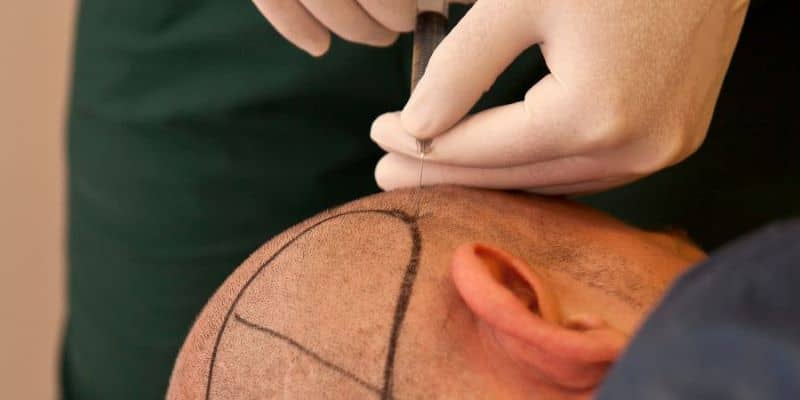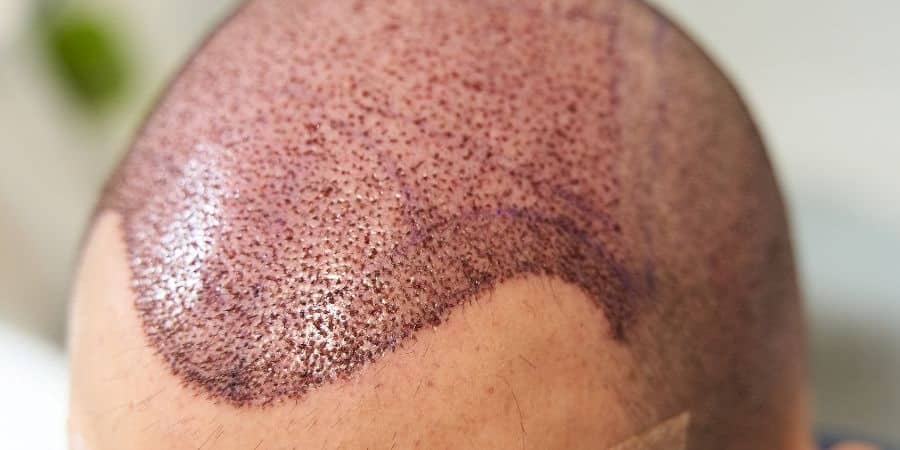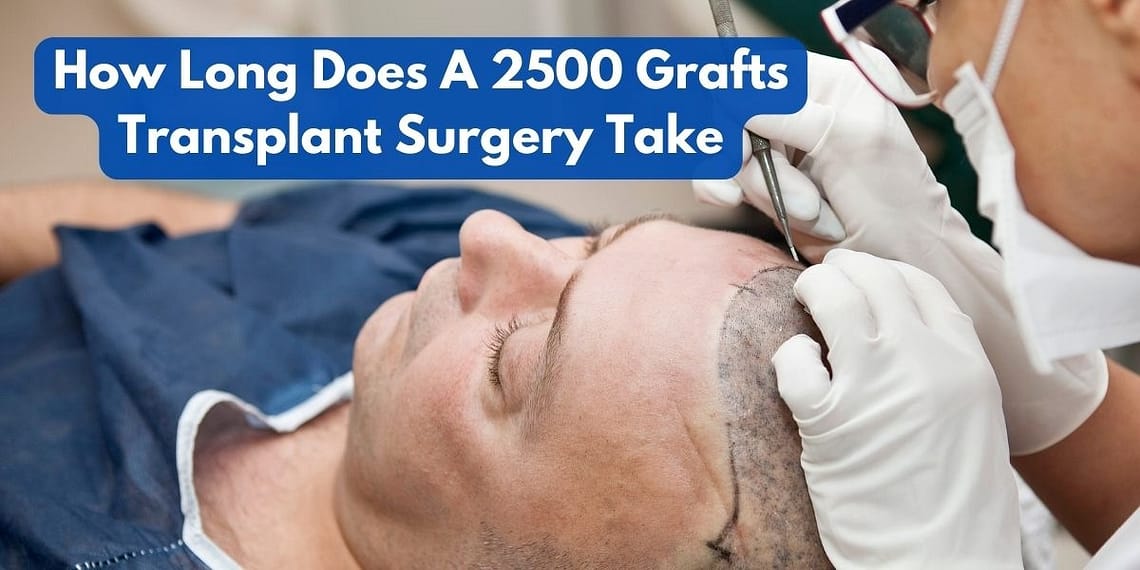Imagine finally taking the leap and deciding to undergo a 2500 grafts hair transplant surgery. The thought of potentially regaining a fuller head of hair is exciting, but you may also have questions swirling in your mind. How long will the surgery actually take?
Will it be a lengthy procedure, or can it be completed in a relatively short time? In this article, we will explore the factors that can influence the duration of a 2500 grafts hair transplant surgery, giving you a better understanding of what to expect. So, sit back, relax, and let’s delve into the world of hair transplantation!
Preparing for Surgery
Consultation with the Surgeon
Before undergoing a hair transplant surgery, it is important to have a consultation with the surgeon. During this consultation, you will discuss your expectations, the procedure itself, and any potential risks or complications. It is essential to have a clear understanding of the surgery and all the details involved. This is also a great opportunity to address any concerns or ask any questions you may have.
Medical Tests and Evaluation
In preparation for the hair transplant surgery, your surgeon will perform various medical tests and evaluations. These tests are performed to ensure that you are a suitable candidate for the procedure and that there are no underlying health issues that may affect the surgery or the healing process. These tests typically include blood tests, a thorough examination of your scalp, and in some cases, a biopsy may be performed.
Preoperative Instructions
Prior to the surgery, your surgeon will provide you with specific preoperative instructions that you should follow. These instructions may include guidelines on medications, what to eat or drink before the surgery, and the use of certain hair care products. It is crucial to follow these instructions diligently to ensure the best possible outcome from the surgery and to minimize any potential complications.

The Surgical Procedure
Local Anesthesia Administration
The hair transplant surgery is typically performed under local anesthesia. This means that the medical staff will numb only the specific area being treated, and you will remain awake throughout the procedure. The purpose of the local anesthesia is to ensure that you experience minimal discomfort or pain during the surgery. Your surgeon will administer the anesthesia directly into the scalp using a small needle.
Donor Hair Extraction
One of the key steps in a hair transplant surgery is the extraction of donor hair. Surgeons usually take the donor hair from the back or sides of your head, where the hair is resistant to balding. The extraction can be done using two main techniques: strip harvesting or follicular unit extraction (FUE). Strip harvesting involves removing a strip of skin with hair follicles, while FUE involves extracting individual hair follicles directly from the scalp. The technique used will depend on various factors, including the surgeon’s preference and the patient’s specific needs.
Preparation of Recipient Site
Once the donor hair has been extracted, the surgeon will prepare the recipient site. This involves creating tiny incisions or holes in the balding or thinning areas of the scalp. The surgeon will determine the size and shape of these incisions based on the size and density of the grafts being implanted. The surgeon will carefully consider the natural direction and angle of your existing hair to ensure a natural-looking outcome.
Graft Implantation
After the recipient site has been prepared, the extracted hair follicles are carefully implanted into the incisions. This is a meticulous process that requires precision and expertise. The surgeon will strategically place the grafts to ensure proper growth and a natural appearance. The number of grafts required will depend on the extent of your hair loss and the desired density.
Factors Affecting Surgery Duration
Hair Density and Thickness
The density and thickness of your hair can impact the duration of the hair transplant surgery. If you have a higher hair density, it may require more time to extract and implant the grafts. On the other hand, if you have thin or fine hair, the surgeon may need to spend extra time carefully implanting the grafts to ensure proper coverage and a natural look.
Experience and Expertise of Surgeon
The experience and expertise of the surgeon also play a significant role in the duration of the surgery. A skilled and experienced surgeon will be able to perform the procedure efficiently and effectively. They will have the necessary knowledge and techniques to streamline the process, ultimately reducing the overall surgery time.
Surgical Technique Used
The surgical technique employed by the surgeon can also affect the duration of the hair transplant surgery. Strip harvesting, for example, may take slightly longer than follicular unit extraction (FUE) because of the additional steps involved in removing the strip of scalp. However, the exact duration will vary depending on the specific technique used and the individual patient’s needs.

Estimated Time for a 2500 Grafts Transplant
Consideration of Average Graft Placement Speed
On average, a skilled surgeon can implant around 500 to 1000 grafts per hour. Considering this average placement speed, a 2500 grafts hair transplant surgery may take approximately 2.5 to 5 hours. However, it is important to note that this is just an estimate, and the actual duration may vary.
Include Time for Breaks and Rest
During the surgery, it is essential for both the patient and the surgeon to have regular breaks and rest periods. This allows the patient to remain comfortable and helps the surgeon maintain their focus and precision. These breaks and rest periods should be factored into the estimated surgery time.
Additional Time for Complex Cases
In some cases, certain factors such as scarring, multiple previous surgeries, or challenging recipient sites may make the surgery more complex. These complex cases may require additional time for the surgeon to carefully navigate and ensure optimal results. If your case falls into this category, it is important to discuss the potential impact on surgery duration with your surgeon.
Recovery and Post-Surgery
Postoperative Care Instructions
After the hair transplant surgery, you will be provided with postoperative care instructions. These instructions will outline how to care for your newly transplanted hair and scalp. This may include specific guidelines on washing, avoiding certain activities, and the use of prescribed medications or topical treatments. Following these instructions diligently is crucial for proper healing and optimal results.
Side Effects and Healing Process
It is important to be aware of the potential side effects and the healing process following a hair transplant surgery. Common side effects may include swelling, bruising, and mild discomfort, which usually subside within a few days to weeks. The healing process typically takes several weeks, and during this time, it is important to follow the postoperative care instructions and avoid any activities that may interfere with the healing process.
Follow-up Appointments
Following the surgery, you will need to attend regular follow-up appointments with your surgeon. These appointments are essential for the surgeon to monitor your healing progress, assess the growth of the transplanted hair, and make any necessary adjustments. It is important to attend these appointments and communicate any concerns or questions you may have to ensure the best possible outcome.
Also Check: How Long Does It Take For Hair To Grow Back?
Frequently Asked Question (FAQs)
1. How long does it take to recover from a hair transplant surgery?
The recovery time after a hair transplant surgery can vary from person to person. Generally, most patients can expect to recover within 7 to 10 days. However, it is important to note that full healing and optimal results can take several months. Following the postoperative care instructions provided by your surgeon is crucial for a smooth recovery.
2. Can I drive myself home after the procedure?
It is not recommended to drive yourself home immediately after the hair transplant surgery. The effects of the local anesthesia and the surgery itself may impair your ability to operate a vehicle safely. Additionally, It is advised to arrange for someone to drive you home or schedule alternative transportation.
3. When can I resume my normal physical activities?
The specific timeline for resuming normal physical activities will be provided by your surgeon during the postoperative care instructions. In general, doctors may advise you to avoid strenuous activities, such as heavy lifting or rigorous exercise, for a few weeks after the surgery. It is important to give your body time to heal and to follow the instructions provided by your surgeon for a successful recovery.
Conclusion
Surgery duration for a 2500 grafts hair transplant can vary depending on various factors, including hair density, surgeon’s expertise, and surgical technique used. On average, the surgery may take around 6-8 hours, taking into consideration breaks and rest periods.
It is important to have a consultation with a skilled surgeon, follow preoperative and postoperative instructions, and attend follow-up appointments for optimal healing and desired results. Remember that, each patient’s journey is unique, and discussing the specifics with your surgeon will help provide a more accurate estimate of the surgery duration.





